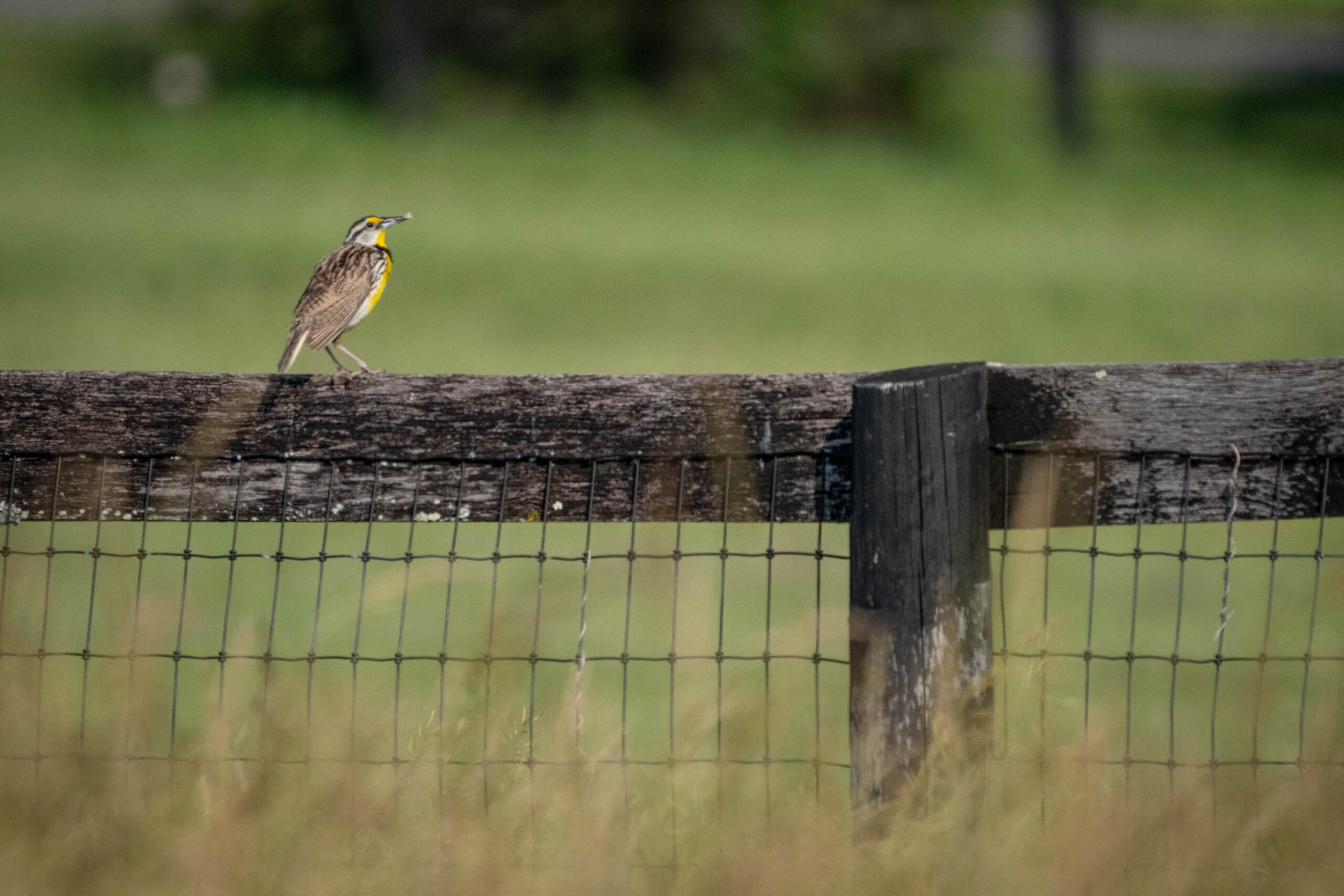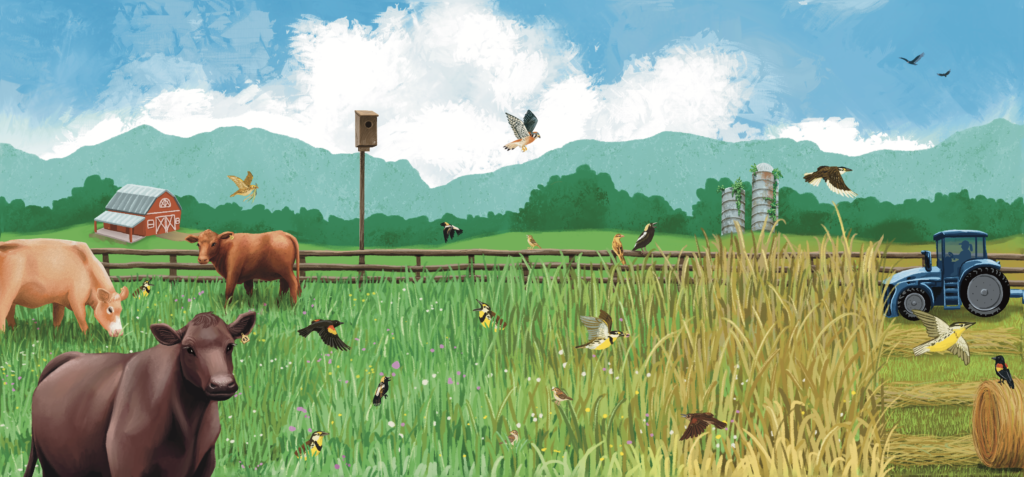
Let’s Bring Back Our Grassland Birds
The Virginia Grassland Bird Initiative
Over 60 species of birds rely on grassland habitats here in Virginia.
But the state of our grasslands is changing with increased pressure from development and changing agricultural practices. As a result, many grassland bird species are in severe decline.
The good news is that private landowners and farmers can — and are — helping bring these birds back!
There is a suite of best management practices, many linked to financial cost-share opportunities, that can be implemented in ways that allow grassland birds to thrive and farm production goals to be met.
The Virginia Grassland Bird Initiative—a partnership between Smithsonian’s Virginia Working Landscapes, The Piedmont Environmental Council, American Farmland Trust, and Quail Forever — is innovating new ways to reverse the declines of grassland birds on working lands in the Virginia Piedmont, Blue Ridge, and Shenandoah Valley. Together, VGBI partners work with landowners and producers in 16 counties to restore grassland habitat for the benefit of birds and farms.

VGBI Conservation Goals
- Raise awareness about the plight of grassland birds.
- Identify science-based best management practices that benefit grassland birds, landscape resiliency, and farm production goals.
- Assist producers and landowners in adopting bird-friendly practices.
- Unify conservation messaging and technical assistance advice across regional conservation practitioners.
- Create opportunities for training and dissemination of knowledge.
- Place Virginia on the map as a nationally-recognized region of bird conservation.
Cover image by Percy Ulsamer; Artwork by Nick Garnhart
